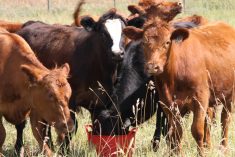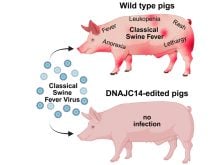A growing number of cattle producers are marketing grass-finished beef. The challenge, especially in a northern climate, is having high quality forage in the months that cattle need to gain weight and finish.
Experts say it’s important to have genetically efficient cattle that do well on grass and to feed energy-dense forages in the finishing period.
Some forages are more energy-dense than others and contain higher levels of sugars. Grass-fed beef producers around the world use these species instead of grain to finish beef animals. Some forages also work in a fall and winter grazing program.
Read Also

The Western Producer Livestock Report – November 6, 2025
Western Producer Livestock Report for November 6, 2025. See U.S. & Canadian hog prices, Canadian bison & lamb market data and sales insights.
Dan Undersander, recently retired extension and forage agronomist at the University of Wisconsin, says ryegrass is one of the most energy-dense grasses and is used all over the world.
“The main issue is that it lacks winter hardiness. The ryegrasses are actually a continuum, varying in energy density from Italian, which some people call annuals, to the perennials, with crosses between the two. We generally think in terms of the diploids for grazing and the tetraploids for hay. Tetra means it has four copies of every gene,” he said.
“There is some work on tetraploids in England, developing high sugar types, but we can finish beef on pasture whether or not we have high sugar types. The main thing is to have adequate forage and graze it at an early stage of growth when nutrient levels are highest,” said Undersander.
“Annual ryegrass is ideal, but we can also produce good beef on pasture with various perennial forages. Ryegrasses need a cool, wet environment.”
In arid regions with less than 50 centimetres of annual rainfall, producers might do better with permanent pasture or native grasses. The best species will vary by region. Forages that are adapted to the local environment can be harvested or grazed at their highest quality.
“We can finish beef on many kinds of forage, as long as it is grazed when leafy, immature and high-quality, with adequate density of stand that cattle can take big bites,” said Undersander.
“Cattle take about one bite per second and graze several hours a day, to take 30,000 bites or so. If those are big bites and the forage is high-quality, cattle will gain weight. If they are small bites and/or low in quality, the cattle won’t finish as well.
“In finishing grass-fed beef animals, we must focus on two things. We need a rapidly growing animal so we don’t have to keep it as long. Secondly, we want that animal at a certain weight with a certain degree of marbling. If we can finish an animal at 18 months, we have less investment in it than one that takes 24 months or longer to finish.”
Big Bear Ranch, Horsefly, B.C.
Rainer Krumsiek has found a growing market for the grass-fed meat he produces on his Big Bear Ranch near Horsefly, in central British Columbia. The ranch was homesteaded in 1950 and increased to 2,250 acres by the time the Krumsieks purchased it in 1995. Grazing management had to be adapted to the previous owner’s logging activities that included piles of logging leftovers in more than 50 windrows 300 to 1,000 metres long.
Rather than try to remove these, the Krumsiek family left them to serve as windbreaks and natural shelter for cattle. This helps reduce the herd’s nutritional needs and winter feed inputs. The windrow berms also hold moisture, slowing run-off and improving forage production.
“Our peak precipitation is in June and July, which is also when hay is at its nutritional peak and should be harvested,” says Krumsiek. “It didn’t make sense to put up hay that is continually being rained on.
“So, we sold our haying equipment and did a lot of custom grazing. That income was more than enough to buy the hay we needed for our 250 cow-calf pairs.”
By grazing instead of haying, pastures steadily improved. In 2010 the ranch was nominated for the British Columbia Cattlemen’s Association environmental stewardship award.
“A few years before that, we’d attended a conference hosted by Stockman Grass Farmer with Gearld Fry (an Arkansas stockman who studied cattle nutrition and genetics). According to what we learned, we selected from our 250 cows just 20 that had the proper frame and body type to be able to finish on grass. We sold the rest of the herd, and these 20 cows were the start of our new adventure in cattle raising,” says Krumsiek.
Since then, he has kept the best heifers to increase the herd and sells beef by the pound from the rest of the calves to private customers.
The ranch has been direct marketing since 2004. The cattle have been grass-fed since 1999, certified organic since 2004 and Animal Welfare Approved since 2014.
“Today we can finish cattle on grass, partly due to the high plane of nutrition in our naturally grown forages, but also their genetics, something that’s impossible with big-framed, inefficient cows. Our cattle are adapted to our climate and forage,” he says.
Ruzicka family, Killam, Alta.
In 1983 Don Ruzicka, his wife, Marie, and their three children moved back to the farm his grandparents had settled in 1915 northwest of Killam.
“Our first 12 years on the farm, we did what 99 percent of farmers did in those days. We grew grain and raised cattle for the commodities market,” he says.
“But it wasn’t working. After a holistic management course taught us about the ecosystem and how everything is interconnected, we developed a plan for the farm. We fenced and cross-fenced our 640 acres as well as 160 acres of rented pasture with single-wire electric fencing so we could rotational graze, to rebuild the soil and maintain pasture health.”
The family was also interested in healthy food and the amino acid profile of grass-fed and grass-finished meat.
“You want the omega-6 to omega-3 ratio to be 5:1. We’ve been able to create the right balance with our beef, hogs and poultry,” he says.
“We sold some of our land, all of our grain equipment and seeded all 380 acres of the cultivated land we had left to pasture in 1996 and 1997. The remaining 200 acres of native prairie, wetlands, sloughs and trees needed tender, loving care. The native prairie here is resilient because of its diversity; a polyculture is the most efficient user of water and also disease resistant. Monoculture grain farming fails in both categories.”
Ruzicka built his herd on genetics that finish nicely on grass.
“At first we tried various crosses. Before we got into Red Poll cattle we had some that didn’t work very well. Then we read about Gearld Fry and his thoughts on how important it is to have cows with high butterfat in their milk. Their calves have a tendency to be more resilient, mature quicker and yield superior grass-finished beef,” said Ruzicka.
Hoven Farm, Eckville, Alta.
Tim Hoven’s farm has been in his family since 1910.
“I’ve been managing the farm since 1998, but my parents became involved with holistic management in the late 1980s and went to strictly grass farming. We have good land, but it’s not great for grain. There is a lot of low land and muskeg in certain areas. Grazing is the best use for most of our place.”
Hoven has a mix of Hereford and Black Welch.
“Now I’m trying Galloway bulls to get some hardier genetics into the mix. We want a smaller-framed animal, and I prefer black just because they can stay warm easier in cold weather than lighter-coloured cattle.
“We run two herds. The cows and calves are one herd and the other group is the fattening herd, animals we are finishing on grass for our direct marketing. We also sell some of those animals to other farmers in the province who direct market organic grass-fed beef. All the calves are grown out for beef.
“We usually finish them at about 24 to 28 months. The challenge here is cold winters. It’s hard to put much weight and fat on them during winter on grass and harvested forages. We’ve tried using good second-cutting alfalfa, but if we get a stretch of -20 C weather for a week or two, they need something besides alfalfa to generate body heat and gain weight during cold,” Hoven said.
The cattle are finished a bit later on spring grass.
“During the winter they might not be putting on any fat but their frame is growing. Once they hit the green grass they just boom and bloom.”















